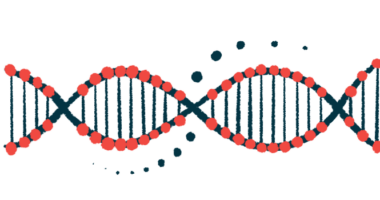New ASAH1 mutation found to cause rare SMA type in boy, 4
Despite SMA-PME diagnosis, boy showed no signs of characteristic seizures

A novel mutation in the ASAH1 gene was identified as the cause of spinal muscular atrophy with progressive myoclonic epilepsy (SMA-PME) in a 4-year-old boy, according to a recent report.
Despite the genetically confirmed diagnosis, the boy showed no signs of myoclonic seizures, or brief muscle spasms, which is a hallmark feature of SMA-PME.
“Our findings are beneficial for genetic diagnosis and counseling in affected families, providing valuable insights for clinicians and expanding the genetic spectrum of ASAH1,” researchers wrote.
The report, “A novel intronic variant in the ASAH1 gene enhances aberrant splicing, causing spinal muscular atrophy with progressive myoclonic epilepsy,” was published in the Italian Journal of Pediatrics.
Spinal muscular atrophy (SMA) is characterized by progressive weakness and muscle atrophy (shrinkage) due to the loss of motor neurons, which are the nerve cells that control muscle movement. Most disease types are caused by mutations in the SMN1 gene, which encodes the SMN protein, a crucial component for motor neuron survival.
Progressive myoclonic epilepsy characterized by involuntary muscle jerks
In rare instances, however, SMA may be associated with progressive myoclonic epilepsy, a childhood seizure condition that is unrelated to the SMN1 gene.
In SMA-PME, mutations in the ASAH1 gene result in a deficiency in acid ceramidase (ACDase), an enzyme that breaks down a family of fatty molecules called ceramides. A decrease in ACDase activity leads to an inefficient breakdown of ceramides, which play a role in the development of SMA-PME; however, the exact mechanism is still not fully understood.
As in SMA, this rare condition is marked by progressive muscle weakness and atrophy, but emerges in middle childhood, followed by myoclonic seizures. Other symptoms include hearing loss, tremors, cognitive dysfunction, and a loss of walking abilities.
A research team in China described the case of a boy who was admitted to the hospital with muscle weakness. In early childhood, he reached typical developmental milestones: controlling head movements at 4 months, sitting unassisted at 6 months, and walking independently at 16 months.
By 3 years of age, however, he began to show progressive weakness, and experienced unstable walking, frequent falls, and difficulty running. At 4, he had trouble rising from the floor and climbing stairs, and developed a waddling gait, which is an abnormal walking pattern of side-to-side swaying, or a duck-like walk.
A neurological examination revealed low muscle tone (hypotonia), with weakness in his proximal muscles (those closest to the body), but normal limb strength. The boy also had hand tremors. Electromyography, to assess the health of muscles and the nerve cells that control them, also revealed abnormalities in the proximal muscles.
Still, he had no history of seizures or myoclonic jerks, or signs of joint contractures, muscle atrophy, or scoliosis, which is a sideways curvature of the spine. There were also no indications of cognitive impairment, hearing loss, or heart, lung, or abdominal problems.
Boy had 2 different mutations in each of his ASAH1 genes
Because his symptoms appeared to match those of SMA, the boy underwent standard genetic testing, but there were no signs of mutations in the SMN1 gene. More extensive genetic tests then identified two different mutations in each of his ASAH1 genes.
To make a protein, the information in DNA is copied into the template molecule called messenger RNA, or mRNA. Mature mRNA is generated when segments of the gene called introns are removed, or spliced out, and the remaining protein-coding segments, known as exons, are joined together. The cellular machinery then converts the information in the mature mRNA into a protein.
One of the boy’s ASAH1 mutations was identified as c.304dupA, located in exon 4 of the gene, which would disrupt ACDase production. This known mutation occurs at a rate of 0.0054% in East Asian populations and 0.0004% globally, the team noted.
The other ASAH1 mutation was c.264 + 11A > G, which was absent from mutation databases and found in one of the gene’s introns, suggesting it affected mRNA splicing.
When researchers examined ASAH1 mRNA from the boy, they confirmed the impact of the exon 4 mutation. In contrast, the intron mutation resulted in a mixture of two mRNA molecules. Approximately 10% of the mRNAs were normal, while 90% were shorter than expected and lacked exon 3, confirming splicing defects that lead to a shortened ACDase enzyme, which would likely be degraded.
“A patient with SMA-PME was genetically diagnosed with two variants of the ASAH1 gene,” the researchers concluded. “This study underscores the critical role of functional analysis, which contributes to the interpretation of [mutations] of uncertain significance and advances our understanding of ASAH1-related disorders.”








